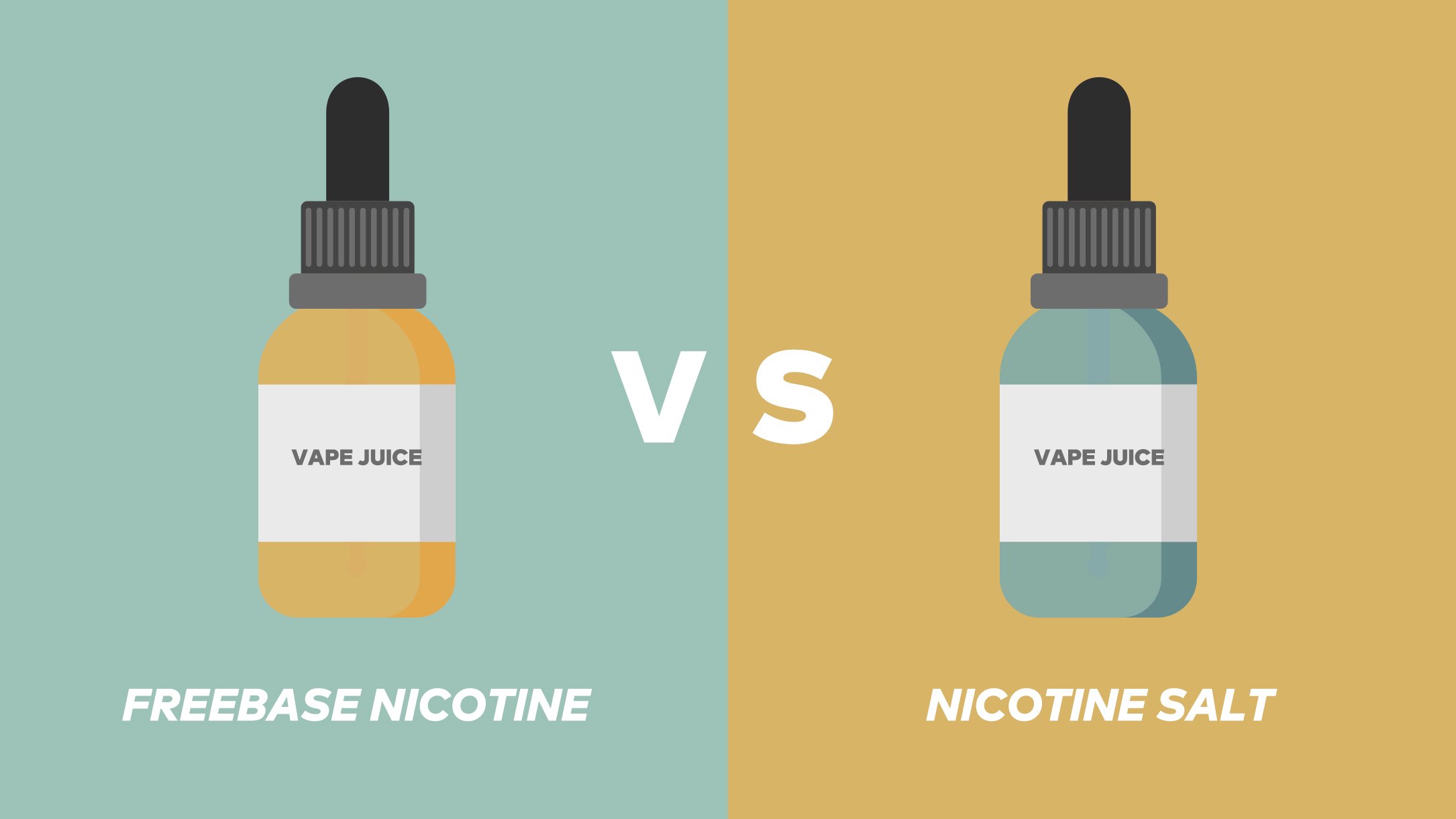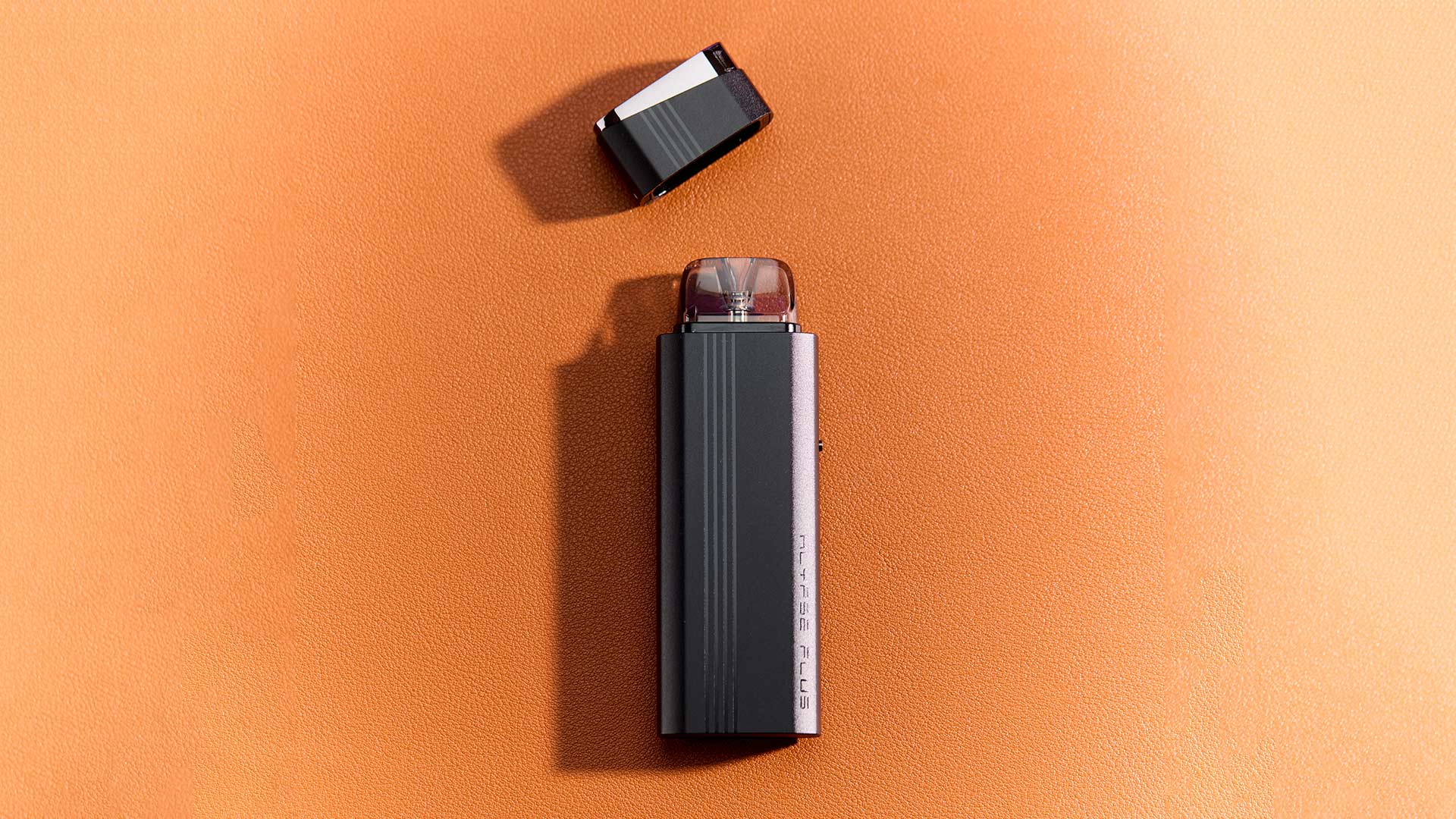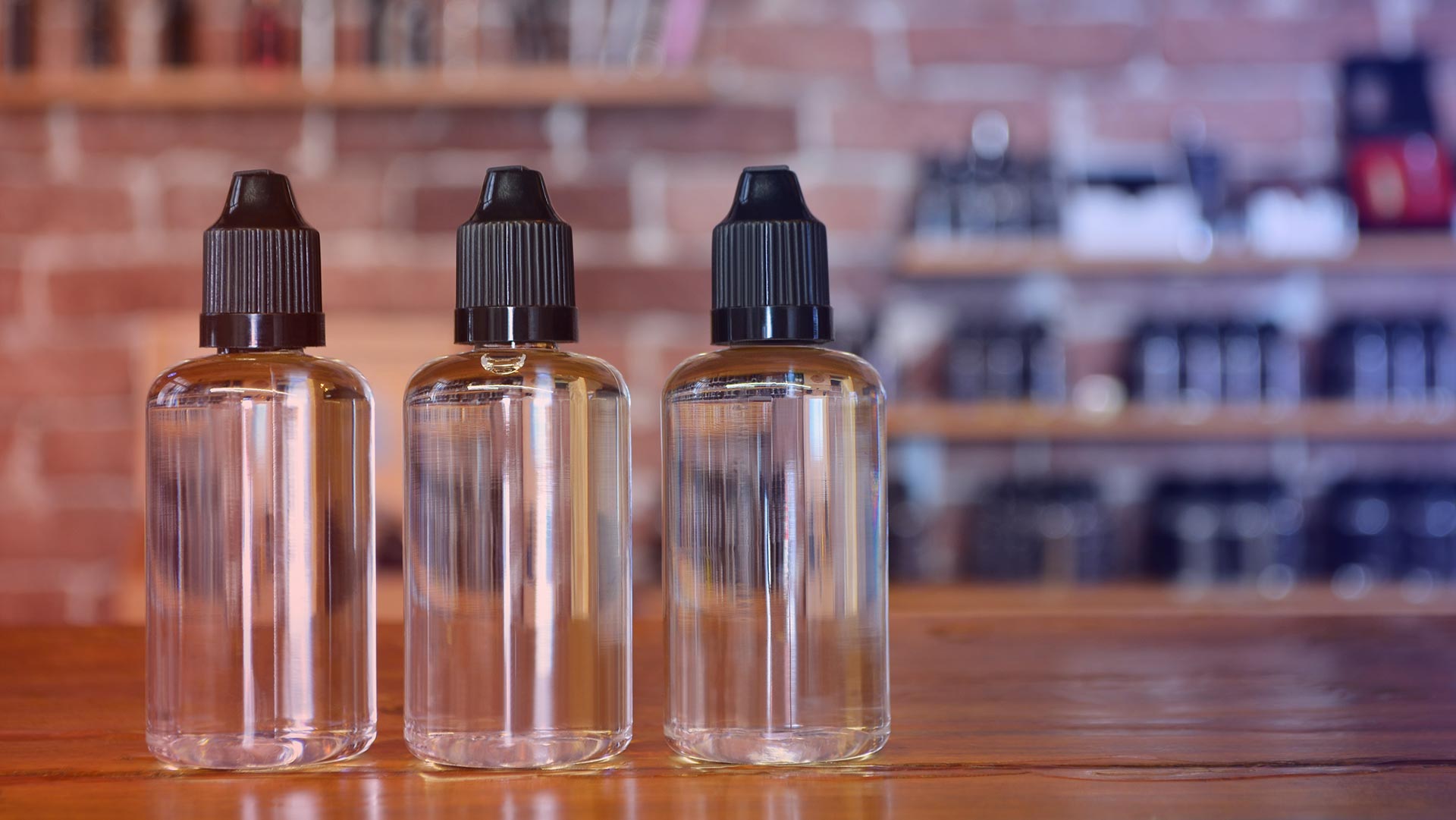There are many variables you can change to create the perfect vaping experience, but nicotine is the first thing to consider when transitioning from cigarettes.
It’s important to note that everyone is different and listening to your body is the best way to know if a particular style or strength of nicotine is working effectively. With that said, looking at some commonly used guidelines is a great place to start.
Many transitioning smokers wonder whether they should use nicotine in their vape at all. Though eliminating the use of nicotine is the end goal for most new vapers, getting away from the extremely harmful combustion of cigarettes is the most important health benefit of quitting smoking. This transition is much more manageable when using the appropriate amount of nicotine at first.
Need some tips to get started?
👉 New to vaping? Here are some Dos and Don'ts [16 Vaping Tips]
Freebase nicotine vs. nicotine salt
There are two main categories of nicotine used in vaping, which are made in different ways and produce different effects when inhaled.

Freebase nicotine is the simplest form of nicotine in vaping and was the only option available when vaping first became popular. Freebase nicotine is created by adding ammonia to pure nicotine. This process is required because pure nicotine is not absorbed well by the body. Freebase is still the most commonly used nicotine in vaping.
Freebase nicotine enters the bloodstream more slowly through vapour than you may be used to with cigarettes, delivering the dose over a longer period of time.
Due to the pH level of freebase nicotine, it produces a noticeable sensation on the throat in higher concentrations, which some people enjoy. This can take some getting used to, but most people adjust to the sensation quickly once they have found an appropriate strength.
Nicotine salt (sometimes referred to as salt nicotine, “nic salt” or “salt nic”) is a more recent innovation in the vaping industry, though it is also found naturally in the tobacco plant. Nicotine salts are available in several formulations, created by adding organic acids to freebase nicotine, which can produce different properties when inhaled.
The most common forms of nicotine salt are nicotine salicylate and nicotine benzoate. Nicotine benzoate was the first nicotine salt to be introduced to the vaping industry, providing more rapid delivery to the blood stream and a greatly reduced throat sensation when compared with freebase nicotine. Nicotine salicylate is gaining popularity and many users find that it produces even less of a throat sensation than nicotine benzoate.
These properties make nicotine salts excellent for rapidly reducing cravings and can feel quite like the nicotine delivery of a cigarette. The decreased throat sensation means even higher strengths of nicotine salt can provide a “smooth” experience for those who find vaping harsh. As an added bonus, nicotine salt is more chemically stable, which results in a longer shelf life.
Which is the right nicotine strength for me?
Nicotine strength in e-liquid is usually expressed in mg/ml or as a percentage. For example, 3mg/ml is considered a low strength, and might also be expressed as 0.3%.
There are two things to consider when choosing a nicotine strength: your device and your smoking habits.
Devices which are set up for mouth-to-lung (MTL) vaping produce small amounts of vapour, so are typically intended to be used with higher strength nicotine e-liquids. Examples of Innokin MTL devices include the Endura T22 Pro, Endura S1, Endura Apex and Klypse Zip.
Devices which are set up for direct-to-lung vaping (DL or RDL) produce larger amounts of vapour, so are typically intended to be used with higher strength nicotine e-liquids. Examples of Innokin DL or RDL devices include the Z-force tank and any Z-coil tank with a 0.3Ohm Z-coil installed .
Many Innokin devices can be set up for both MTL and RDL vaping, depending on which coil is chosen. Examples include the Coolfire Z60, Kroma-Z, Sceptre, Zenith Pro and Zlide Top. Your Innokin device will always indicate which style(s) of vaping it is designed for.
Once you’ve taken your device into account, it’s time to consider your smoking habits and you need to be honest with yourself if you want the best chance of success.
The following is a rough guide to start with.
| Cigarettes smoked per day | MTL nicotine strength mg/ml (%) | RDL/DL nicotine strength mg/ml (%) |
| 1-5 | 6mg/ml (0.6%) | 3mg/ml (0.3%) |
| 5-10 | 12mg/ml (1.2%) | 6mg/ml (0.6%) |
| 10-15 | 18mg/ml (1.8%) | We recommend MTL devices |
| 15+ | 20mg/ml (2%) | We recommend MTL devices |
These figures are only estimates and everyone has different needs. If you find the vapour too harsh, or feel nauseous, you should lower your nicotine level, to a point that it satisfies cravings and feels comfortable. If you find that you are vaping too frequently and don’t feel satisfied, consider increasing your nicotine level.
Even with a good starting point, the best way to find your ideal type of nicotine and nicotine strength is through trial and error. Some heavy smokers may be satisfied by the low concentrations of nicotine, while other light smokers may require a high strength to avoid cigarettes. The main thing is that you stop smoking. The “correct” strength and type of nicotine is the one that allows you to achieve this.
How can I reduce my nicotine consumption?
Nicotine is a highly addictive substance and it’s the main reason people find it difficult to quit smoking. Vaping, with its various nicotine concentration options, offers an opportunity to gradually reduce nicotine consumption in a controlled manner.

Step 1: Assess Your Nicotine Consumption
Begin by assessing your current nicotine consumption. Check the strength of the e-liquid you are currently using and try to make a note of the how many millilitres you vape per day. This information will serve as a starting point to track your progress throughout the reduction process. The most important part here is that you are honest with yourself about how much you are currently vaping, as otherwise it will be impossible to set realistic targets.
Step 2: Set Achievable Goals
Setting realistic goals is important when it comes to reducing your nicotine consumption. Choose a realistic timeline that matches your comfort level. Keep in mind that everyone’s circumstances are different and what works for one person may not work for another. During particularly stressful or busy times in your life, you may find it harder to reduce nicotine intake. If you are willing to put in the effort, though, you will see positive results in time.
Step 3: Lower Nicotine Concentration
To start reducing nicotine intake, switch to an e-liquid with a lower nicotine concentration. E-liquids are available in various strengths, as mentioned earlier. Most specialist vape stores stock a wide range of strengths and should be able to help you find an e-liquid that is a small step down from your current nicotine level. This may not be the case at non-specialist retailers such as supermarkets or convenience stores, so check in with your local vape store if you’re struggling to find the ideal solution.
Begin by selecting an e-liquid with a nicotine concentration slightly lower than your current one. This step will allow your body to adjust to the lower nicotine level. For example, if you are currently vaping 20mg/ml e-liquid, try an 18mg/ml liquid.
Step 4: Monitor and Gradually Decrease Usage
Once you have switched to a lower nicotine concentration, closely monitor your vaping habits and nicotine cravings. Observe how your body responds to the change and be patient with yourself during this process because it can be tough.
Over time, as your body adapts to the lower nicotine concentration, gradually reduce the frequency and duration of vaping sessions. This will help you break the habit of reaching for your device out of routine rather than necessity. Implementing distraction techniques or engaging in alternative activities can help curb cravings. For example, having something like chewing gum, green tea or even a stress ball on hand will allow you to focus on something other than your vape.
Step 5: Incrementally Reduce Nicotine Strength
As you successfully adjust to lower nicotine concentrations and reduce vaping frequency, it's time to further decrease the nicotine strength of your e-liquid. Repeat Step 3 by selecting an e-liquid with an even lower nicotine concentration than before. This progressive reduction allows your body to adapt gradually, minimizing cravings.
Step 6: Patience, Persistence, and Support
Reducing nicotine consumption is a process that requires patience, persistence, and sometimes a support system. Reach out to friends, family, or support groups who can provide encouragement and understanding during this process. Their support can help you stay motivated and focused on your goal of reducing nicotine intake.
Step 7: Consider Nicotine-Free Options
Eventually, you may reach a point where you no longer rely on nicotine for vaping enjoyment. At this stage, consider transitioning to nicotine-free e-liquids. There may be short period of time after you have fully weaned off nicotine that you still crave the sensation of vaping, so having a nicotine-free vape may help you in the final step.
If you repeat the process of reducing the frequency of your vaping sessions, you may now find it significantly easier to stop vaping entirely, as your body no longer craves nicotine!
Gradually reducing nicotine consumption when vaping is an effective method for those looking to break free from nicotine addiction. By following these simple steps, you can significantly increase your chances to lower nicotine consumption and ultimately eliminate it altogether.

Benedict Jones
I quit smoking in 2013 through vaping and this opened my eyes to the life changing potential of next-generation nicotine. Since 2016, I've been working in the vapour products industry as a writer and marketer, specialised in consumer culture, product development and industry news.





COMMENTS